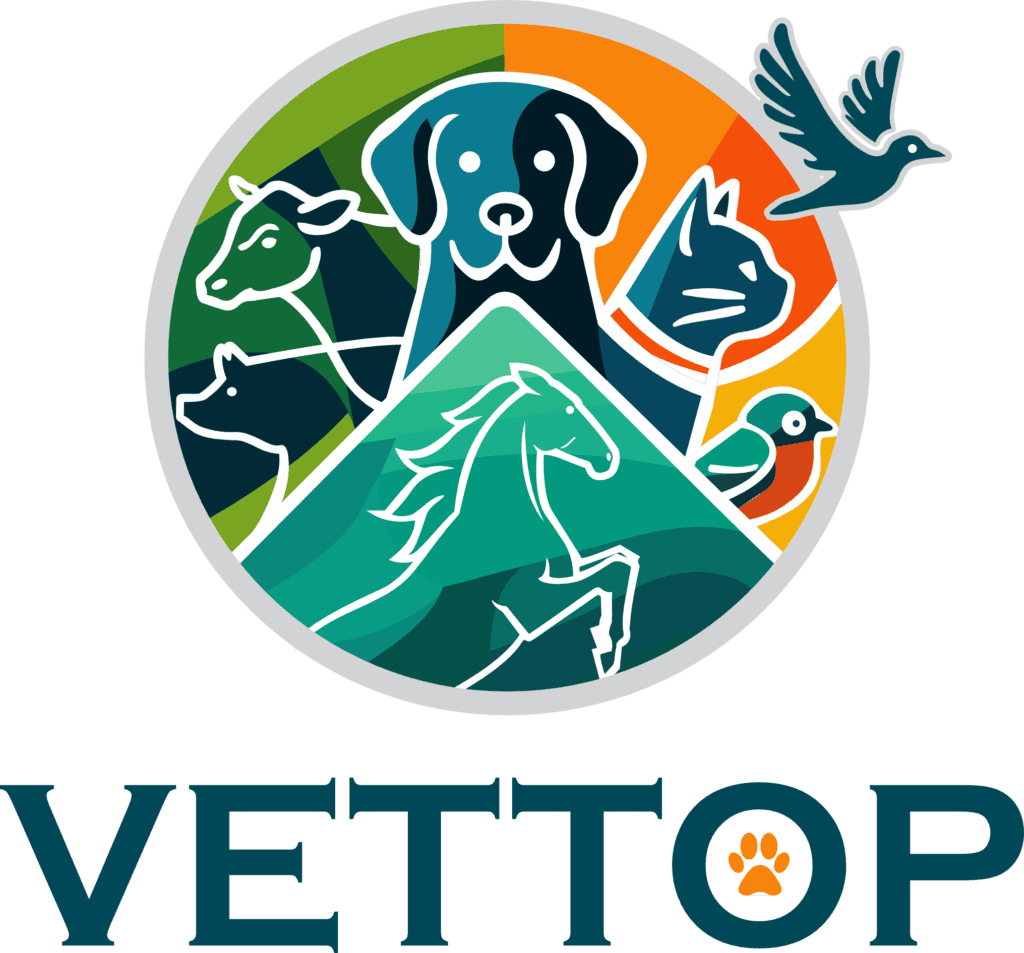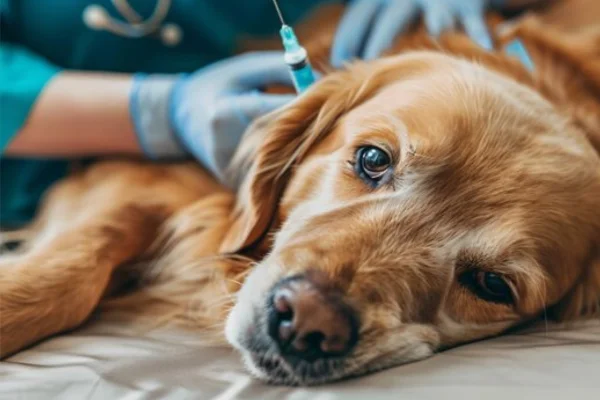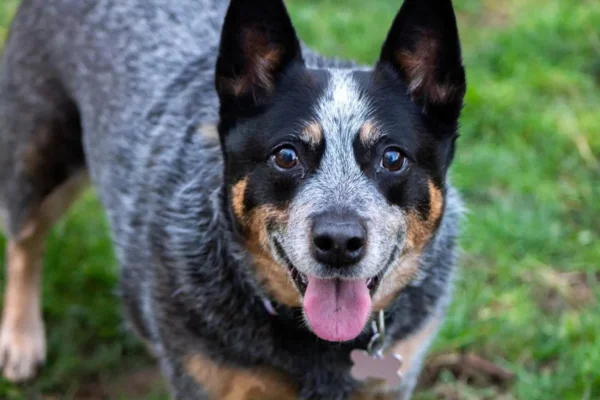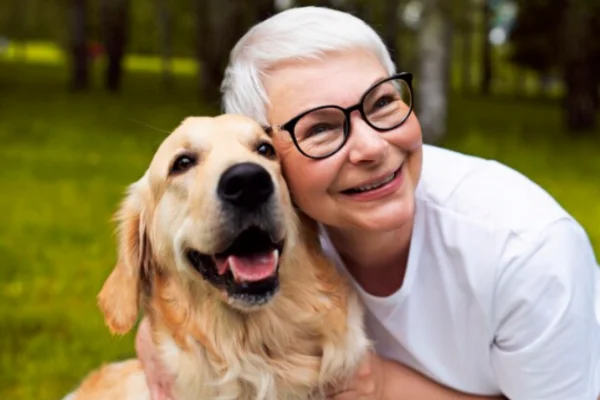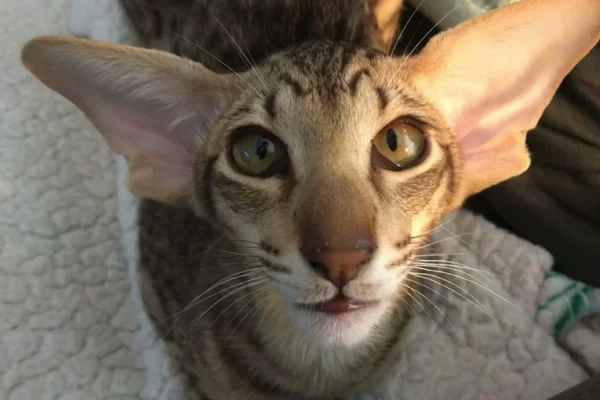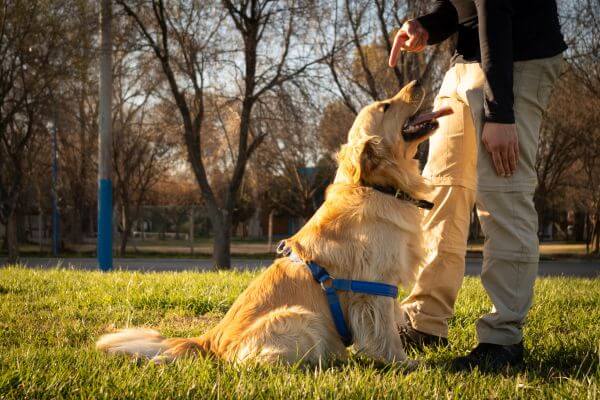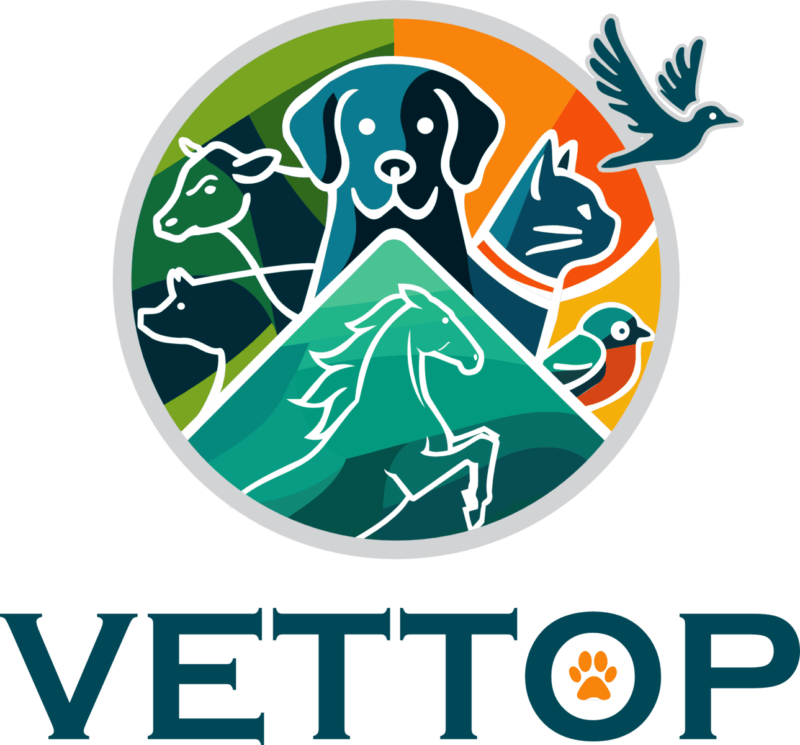Canine Parvovirus
Understanding the disease and how to protect your four-legged friend
Canine parvovirus is a disease that has terrified owners and veterinarians for decades. Extremely contagious and often fatal, this viral disease mainly affects puppies and young dogs, although adult dogs can also be susceptible. Let's explore in detail what parvovirosis is, its symptoms, forms of transmission, treatment and, most importantly, how to prevent it.
What is Parvovirus?
Canine parvovirosis is caused by canine parvovirus type 2 (CPV-2), a highly resistant virus capable of surviving in adverse environments for long periods. The parvovirus mainly attacks dogs' gastrointestinal tract, destroying the intestinal villi, which results in severe dehydration and malnutrition. In addition, the virus can affect the heart, especially in puppies, leading to severe cardiac complications.
History and Context
Parvovirosis was first identified in the 1970s and quickly became a global concern due to its high mortality rate and rapid spread. Since then, it has been the subject of many studies and control efforts. The introduction of effective vaccines has significantly reduced the incidence of the disease, but it still poses a considerable risk, especially in areas where vaccination is not widely practiced.
Contents
Transmission
Transmission of parvovirus occurs mainly through direct contact with contaminated feces. Dogs can contract the virus by sniffing or licking infected feces, or even by walking in contaminated areas. Objects such as food bowls, bedding and even human hands can serve as vectors. Due to its resistance, parvovirus can survive for months in outdoor environments, making disinfection a crucial challenge.
In addition, indirect transmission can occur when the virus is carried by insects, rodents or even the shoes and clothing of people who have been in contact with contaminated areas. This makes parvovirosis especially difficult to eradicate in communal environments, such as animal shelters and kennels.
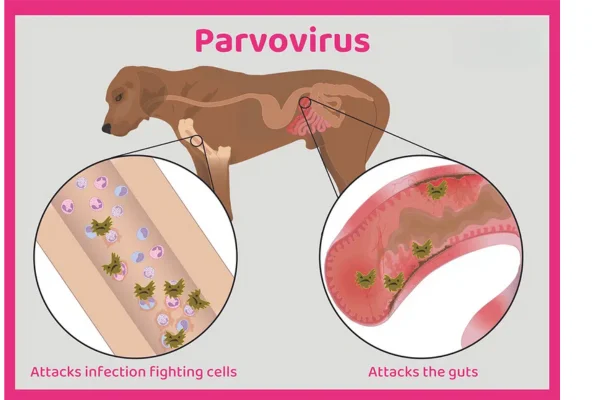
Symptoms
The symptoms of parvovirus usually appear three to seven days after exposure to the virus. Among the most common clinical signs are:
- VomitingOften persistent and severe, causing rapid dehydration.
- DiarrheaGenerally bloody, fetid and in large volumes.
- FeverHigh and persistent.
- Lethargy: The dog seems weak and reluctant to move.
- Loss of appetiteRefusal to eat or drink.
- DehydrationDue to the combination of vomiting and diarrhea, dogs quickly become dehydrated, which can be observed by dry skin and sunken eyes.
Symptoms can develop rapidly, and without proper treatment, the disease can be fatal within a few days. In some cases, dogs may also experience abdominal pain, severe depression and, eventually, shock.
Diagnosis
Early diagnosis of parvovirus is crucial to increase the chances of survival. Veterinarians generally use a combination of clinical history, observed symptoms and laboratory tests. One of the most common tests is ELISA (Enzyme-Linked Immunosorbent Assay), which detects the presence of parvovirus in the dog's feces. Other tests, such as blood counts, can help assess the level of dehydration and the white blood cell count, which is often low due to the infection.
In some cases, it may be necessary to carry out imaging tests, such as ultrasounds, to assess the state of the internal organs and detect possible complications. Laboratory analysis can also include biochemical tests to monitor kidney and liver function, which can be affected by severe dehydration.
Treatment
There is no specific treatment that kills parvovirus. Therefore, treatment is mainly supportive and focused on controlling symptoms and preventing secondary complications. The main approaches include:
- Fluid therapyIntravenous rehydration is essential to combat severe dehydration caused by vomiting and diarrhea.
- AntibioticsUsed to prevent secondary bacterial infections that can occur due to a weakened immune system and destruction of the intestinal barrier.
- Anti-emetic drugs: To control vomiting.
- Nutritional supplementsSometimes administered to ensure that the dog receives essential nutrients while it is unable to eat normally.
- Plasma transfusionsIn severe cases, it may be necessary to administer blood plasma to provide antibodies and essential proteins to the dog's immune system.
The success of treatment depends on how quickly it is started and the severity of the symptoms. Many dogs require intensive hospitalization during the critical period of the disease. In addition, post-treatment home care is crucial for a full recovery, including a balanced diet and constant monitoring of the dog's vital signs.
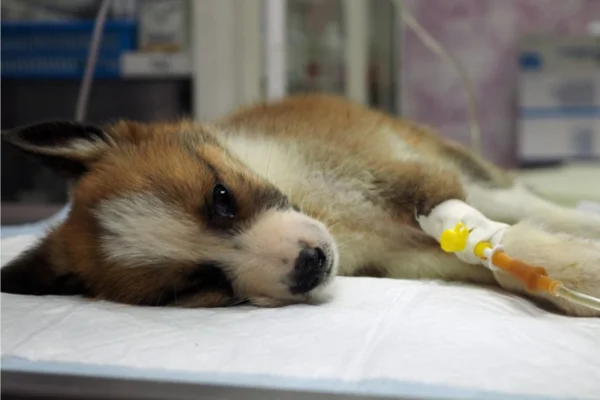
Prevention
Prevention is undoubtedly the best way to protect your dog against parvovirosis. The main preventive strategies include:
- VaccinationsVaccination is the most effective preventative measure. Puppies should receive a series of vaccinations from six to eight weeks of age, with regular boosters as recommended by the vet.
- HygieneKeeping your dog's living area clean and disinfected is essential. Use cleaning products capable of killing parvovirus, such as sodium hypochlorite solutions.
- Avoid exposurePuppies not fully vaccinated should be kept away from public places where other dogs frequent, such as parks and pet shops.
- EducationInforming yourself about the risks and prevention methods of parvovirus is crucial to making informed decisions and protecting your dog.
Additionally, it is important to ensure that all dogs in a community environment, such as shelters and kennels, are vaccinated and that new dogs are quarantined and tested before being introduced to the group. Raising community awareness about the importance of vaccination and hygiene practices is essential to prevent outbreaks.
Success stories and hope
Although parvovirus is a dreaded disease, there are many success stories where dogs have survived and recovered completely. Overcoming stories are common, with dogs who, after intensive treatment, have returned to live happy and healthy lives. The key to these happy endings is swift action and dedicated care on the part of owners and vets.
For example, there are heart-warming stories of dogs rescued from situations of neglect who, after contracting parvovirus and receiving intensive treatment, found loving homes and today are examples of recovery and resilience. These cases illustrate the importance of veterinarians, rescue organizations and committed adopters working together.
Final Reflection
Parvovirus is a stark reminder of the importance of vaccination and maintaining a clean and safe environment for our four-legged friends. Although the disease can be devastating, knowledge and preparation are our best weapons against it. Staying informed, following veterinary advice and acting promptly at the slightest sign of illness are essential steps in ensuring that our dogs live long and healthy lives.
Parvovirus can be an uphill battle, but with love, care and the right support, many dogs are able to overcome this disease and return to brightening their owners' days with their mischief and companionship. After all, the health and well-being of our pets is a reflection of the love and dedication we give them on a daily basis.
In addition, it is important to highlight the role of public policies and awareness campaigns in the prevention of parvovirosis. Local governments and animal welfare organizations should work together to promote mass vaccination, especially in low-income areas where access to veterinary care may be limited.
The Future of Prevention
The continuous development of more effective vaccines and treatments is a vital field of research. Scientists are constantly working to improve the efficacy of existing vaccines and develop new forms of immunization that can offer longer-lasting and more comprehensive protection. In addition, research into specific antiviral therapies against parvovirus continues to be an area of great interest, with the potential to revolutionize the treatment of this disease.
Education and Awareness
Finally, education and awareness are fundamental pillars in the fight against parvovirus. Well-informed owners are better able to take effective preventative measures and recognize the signs of infection early on. Educational programs aimed at schools, communities and veterinary clinics play a crucial role in disseminating information about the importance of vaccination, hygiene and general health care for dogs.
In short, canine parvovirosis is a serious disease, but with the right preventative measures, ongoing education and advances in veterinary medicine, we can significantly reduce its impact and ensure that our beloved furry companions remain healthy and happy. Protecting our dogs from parvovirus is not just an individual responsibility, but a collective commitment to the well-being of the entire canine community.
Thank you for visiting us and check out our other work
